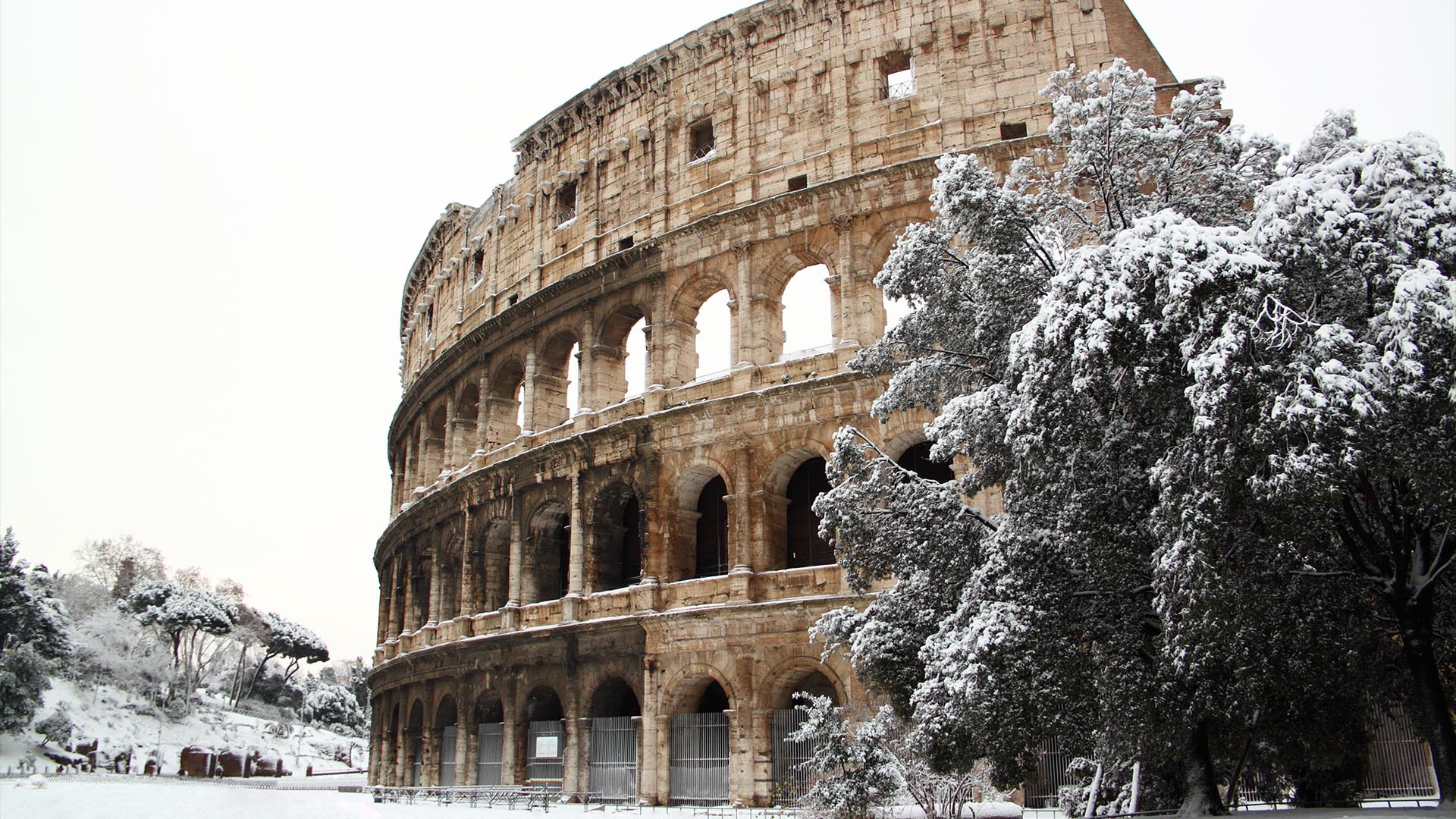Devastating Roman-era plagues were ushered in by cold snaps, study finds
Periods of cold and severe plagues overlap in a new study of ancient Roman climate.

Cold snaps may have ushered in devastating pandemics for ancient Romans that killed countless people, new research finds.
The new study links periods of climate variation with major pandemics and found that the three largest pandemics of the Roman period occurred during some of the most abrupt and deepest cold snaps on record.
There could be a mix of reasons to explain this overlap, said study co-leader Kyle Harper, a Roman historian at the University of Oklahoma and the Santa Fe Institute.
"When you shake the climate system it really impacts the pathogens, ecosystems and, above all, human societies," Harper told Live Science.
The research focuses on a long core of sediments drilled out of the Gulf of Taranto, the wide gulf under the "sole" of Italy's "boot." This area captures sediment washed out from the Po River and other rivers that drain the Apennine Mountains — essentially the heart of the Roman Empire, Harper said.
Study co-leader Karin Zonneveld, a paleoceanographer at the University of Bremen in Germany, used multiple clues inside the sediment cores to match the layers of sediments with specific years. The key data came from volcanic glass in the sediments, which could be chemically traced to known eruptions.
"Several of these eruptions are world-famous, such as the 79 C.E. eruption of Vesuvius that destroyed Pompeii," Zonneveld told Live Science in an email.
Sign up for the Live Science daily newsletter now
Get the world’s most fascinating discoveries delivered straight to your inbox.
Related: Attila the Hun raided Rome due to starvation, not bloodlust, study suggests
The clues revealed the sediments spanned from 200 B.C. to A.D. 600, starting in the late Roman Republic and recording all the way to the final days of the Roman Empire. "You get the whole sweep of what we think of as ancient Roman history, starting from the later Republic," Harper said.
To reconstruct temperature and rainfall, the team turned to tiny organisms called dinoflagellates preserved in the sediment. The life cycle of these organisms is very sensitive to temperature and precipitation. In the late fall and early autumn, dinoflagellates transform to a resting state known as a cyst that can be preserved in the fossil record. Because different species have different preferences, scientists can count the types of dinoflagellates that were thriving in any given year. In colder years, cold-loving species will be more plentiful, for example. In times of high precipitation, when river water spills into the sea carrying extra nutrients, species that prefer high-nutrient conditions will be more common.
The results showed a stable climate period between 200 and 100 B.C., followed by a series of short cold pulses. Between A.D. 160 and 180, there was a strong cold period. This coincided with the Antonine Plague or the Plague of Galen, a pandemic brought to the empire when Roman armies returned from western Asia. The sickness was caused by an unknown pathogen that led to symptoms such as fever, diarrhea and skin pustules. (Experts think it may have been smallpox or measles.)
Another cold period hit between A.D. 245 and 275, which again coincided with a pandemic, known as the Plague of Cyprian. Historical records reveal that this disease caused vomiting, diarrhea and sometimes putrification of the limbs. Again, historians don't know what caused the disease but speculate that it could have been measles, smallpox or some sort of hemorrhagic fever.
Finally, the environmental record suggests another cold snap after A.D. 500, coinciding with the Late Antique Little Ice Age, a cooling period known from other climate records. In A.D. 541, the first ever outbreak of bubonic plague hit western Eurasia. The Plague of Justinian, as it's known, was a precursor to the Black Death that would devastate Europe in the 1300s.
"The correlation between times when Europe was suffering under major outbreaks of infectious diseases corresponding to phases of cold climate was striking," Zonneveld said.
There are many reasons disease outbreaks and climate may be linked, Harper said, ranging from ecological changes that might make spillover of animal diseases to humans more likely, to changes in human resilience. In an agricultural society like ancient Rome, he said, farmers may have struggled to produce enough crops in cold periods, leading to malnutrition that left people susceptible to diseases.
The topic is interesting, said Ulf Büntgen, a professor of environmental systems analysis at the University of Cambridge who was not involved in the study. However, there are questions about the certainty of the climate reconstruction, he told Live Science.
The next step for the researchers is to do a deeper comparison of the data in the sediment core to other climate records and archaeological studies of the Roman heartland, Harper said.
"Investigating the resilience of ancient societies to past climate change … might give us better insight into these relationships and the climate change-induced challenges we are facing today," Zonneveld said.
The research was published Friday (Jan. 26) in the journal Science Advances.

Stephanie Pappas is a contributing writer for Live Science, covering topics ranging from geoscience to archaeology to the human brain and behavior. She was previously a senior writer for Live Science but is now a freelancer based in Denver, Colorado, and regularly contributes to Scientific American and The Monitor, the monthly magazine of the American Psychological Association. Stephanie received a bachelor's degree in psychology from the University of South Carolina and a graduate certificate in science communication from the University of California, Santa Cruz.









